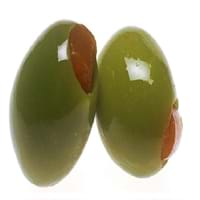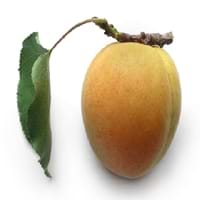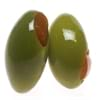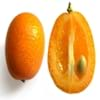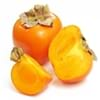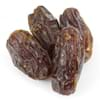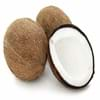Health Benefits
Cancer prevention, Helps in cartilage regeneration, Prevents macular degeneration, Treatment of alzheimer's disease
Asthma treatment, Cancer prevention, Controls blood pressure, Digestive aid, Heart care, Maintains hormonal balance, Regulation of heart rate, Skin cleansing, Skin rejuvenation
General Benefits
Anti oxidant properties, Anti-inflammatory properties, Boosts immune system, Controls blood pressure, Digestive aid, Maintains healthy cholesterol level
Boosts immune system, Controls blood pressure, Digestive aid, Eye care, Maintains healthy cholesterol level, Strengthens bones
Skin Benefits
Hydrates skin, Skin rejuvenation, Treatment of skin diseases
Hydrates skin, Reduces wrinkles, Treatment of dark spots, Treatment of skin diseases
Hair Benefits
Acts as moisturizer, Good conditioner, Regulates hair growth
Good conditioner, Regulates hair growth, Rejuvenates scalp, Softening mask, Treatment of dandruff
Allergy Symptoms
NA
Abdominal cramps, Anaphylaxis, Breathing difficulty, Diarrhea, Itching of mouth, Itching sensation in throat, Swelling of mouth, tongue or lips, Vomiting, Wheezing
Side Effects
Affects blood glucose levels, Dizziness, Stomach pain
Dizziness, Headache, Nausea, Vomiting
Best Time to Eat
Hardly eaten raw, Olive oil is consumed for many purposes.
Best if taken as a breakfast (or empty stomach), As a snack in the late afternoon, Don't consume at night and before bed, Eat the fresh ones, avoid mixing with any other foods, don't eat after meal.
Vitamin B5 (Pantothenic Acid)
Vitamin C (Ascorbic Acid)
Vitamin K (Phyllochinone)
Phytosterol
Not Available
Calories in Fresh Fruit with Peel
Calories in Fresh Fruit without Peel
Not Available
Not Available
Calories in Frozen Form
Not Available
Not Available
Type
Tree fruit
Tree fruit
Season
Spring, Summer
Summer
Varieties
Manzanillo, Sevillano, Mission, Ascolano, Barouni, Gordal, Rubra and Picholine
Gold Cot, Tilton, Wenatchee, Goldbar, Gold Kist, Tomcot, Harcot, Brittany Gold, Harglow, Hunza, Moorpark, Patterson and Royal Rosa
Color
Black, Green, Purple, Yellow
Orange, Yellowish-orange
Inside Color
Brown
Yellow
Taste
Bitter
Smooth, Sweet
Origin
Eastern Mediterranean Region
China
Soil Type
Well-drained
Well-drained
Climatic Conditions
Warm to hot climate
Dry, Hot
Facts about
- In ancient Greece, 1st eye shadow was made by adding olive oil in ground charcoal.
- The most expensive form of olive oil is Extra Virgin.
- Largest type of olive tree is known as donkey tree & smallest one is called bullet.
- 9 Jan is considered as the National Apricot Day.
- Apricots have been around for more than 4000 yrs.
- In latin, the meaning of apricot is 'precious'.
- 95% of apricots in the US are produced by California.
Top Producer
Spain
Turkey
Other Countries
Algeria, Egypt, Greece, Italy, Morocco, Portugal, Syria, Tunisia, Turkey
Algeria, Egypt, France, Iran, Italy, Morocco, Pakistan, Spain, Uzbekistan
Top Importer
United States of America
United States of America
Top Exporter
Italy
France
Botanical Name
Olea europaea
Prunus armeniaca
Synonym
Not Available
Not Available
Subkingdom
Tracheobionta
Tracheobionta
Division
Magnoliophyta
Magnoliophyta
Class
Magnoliopsida
Magnoliopsida
Species
O. europaea
P. armeniaca
Difference Between Olive and Apricot
We might think that Olive and Apricot are similar with respect to nutritional value and health benefits. But the nutrient content of both fruits is different. Olive and Apricot Facts such as their taste, shape, color, and size are also distinct. The difference between Olive and Apricot is explained here.
The amount of calories in 100 gm of fresh Olive and Apricot with peel is 115.00 kcal and 48.00 kcal and the amount of calories without peel is Not Available and Not Available respectively. Thus, Olive and Apricot belong to High Calorie Fruits and Low Calorie Fruits category.These fruits might or might not differ with respect to their scientific classification. The order of Olive and Apricot is Lamiales and Rosales respectively. Olive belongs to Oleaceae family and Apricot belongs to Rosaceae family. Olive belongs to Olea genus of O. europaea species and Apricot belongs to Prunus genus of P. armeniaca species. Beings plants, both fruits belong to Plantae Kingdom.
